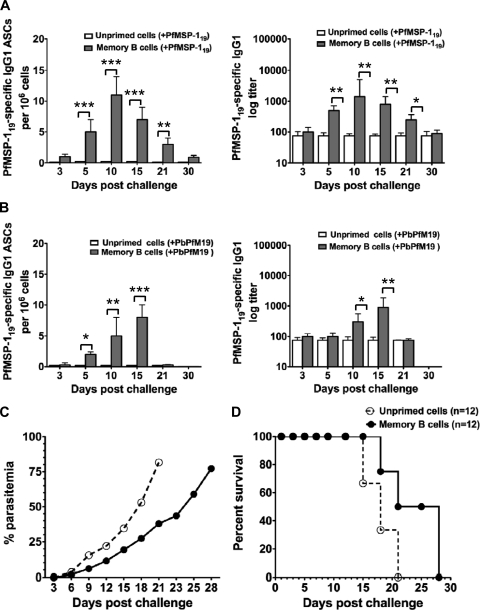Fig 5.
PfMSP-119-induced memory B cells offered no protection to infection in the adoptive transfer model. Eight weeks after the last immunization, splenocytes and bone marrow cells were isolated from PfMSP-119-primed (n = 6) and adjuvant-treated control (n = 6) mice were depleted of CD138+ cells and pooled. A total of 3 × 107 pooled cells were intravenously transferred into nonirradiated naive mice. For detecting response of transferred memory B cells, the recipient mice were bled at the indicated days after PfMSP-119 (Ag) challenge (n = 15) (A) and after PbPfM19 parasite challenge (n = 15) (B) to determine the anti-PfMSP-119-specific IgG1 response in serum and anti-PfMSP-119 IgG1 ASCs in spleen by ELISA and ELISPOT, respectively. (C and D) The course of parasitemia levels in blood and survival of mice to infection were monitored by examination of blood films stained with Giemsa reagent at the indicated times in the recipient mice with PfMSP-119-specific memory B donor cells or adjuvant-treated control unprimed donor cells (n = 12). *, P < 0.05; **, P < 0.02; ***, P < 0.001. (C) Data represent mean percentages of parasitemia ± standard errors of the mean of 12 mice per group. Values represent one of two independent experiments with similar findings. (D) Percent survival of recipient mice (n = 12) with PfMSP-119-specific memory B donor cells or adjuvant-treated control unprimed donor cells after intraperitoneal challenge with 104 pRBCs. The data are representative of two independent experiments.

